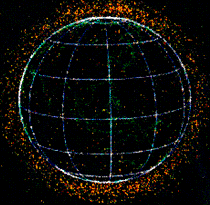View of satellite population including space debris - taken from low Earth orbit.
Click on image for full size
NASA
Junk in Space!
News story originally written on June 30, 1997
Whether on Earth or in Space, human activity creates waste. Like the Earth's environment, the space environment is getting more and more cluttered. There are currently millions of man-made orbital ruins that make up "space junk". Unfortunately, the past 30 years of space exploration have generated a lot of junk. Orbital debris includes things such as hatches blown off space modules, paint fragments from the space shuttle, or satellites that are no longer in use.
Man-made debris orbits at a speed of roughly 17,500 miles/hour! Think of the damage even a small speck of paint could do if it hit a spacecraft at such a high speed!
Spacecraft must be protected by shields that are not hurt when they get hit with space junk. NASA tested different types of shielding in the Long Duration Exposure Facility (LDEF). The LDEF was put in orbit April 1984 by the Shuttle Challenger. It was collected 5.7 years later.
Besides having shielding from space junk, a spacecraft can move out of the way to avoid getting hit by debris. Currently, the Aerospace Corporation in California is making a center that will help space mission planners avoid impacts with space junk.
You might also be interested in:

Whether on Earth or in Space, human activity creates waste. Like the Earth's environment, the space environment is getting more and more cluttered. There are currently millions of man-made orbital ruins
...more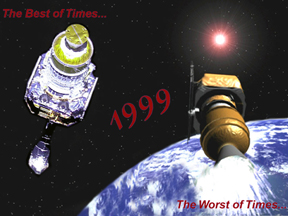
It was another exciting and frustrating year for the space science program. It seemed that every step forward led to one backwards. Either way, NASA led the way to a great century of discovery. Unfortunately,
...more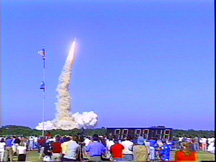
The Space Shuttle Discovery lifted off from Kennedy Space Center on October 29th at 2:19 p.m. EST. The weather was great as Discovery took 8 1/2 minutes to reach orbit. This was the United States' 123rd
...more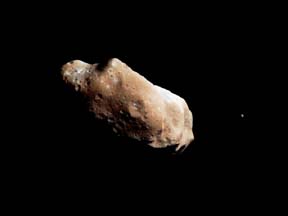
A moon was discovered orbiting the asteroid, Eugenia. This is only the second time in history that a satellite has been seen circling an asteroid. A special mirror allowed scientists to find the moon
...more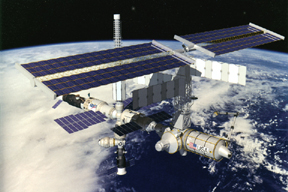
Will Russia ever put the service module for the International Space Station in space? NASA officials want an answer from the Russian government. The necessary service module is currently waiting to be
...more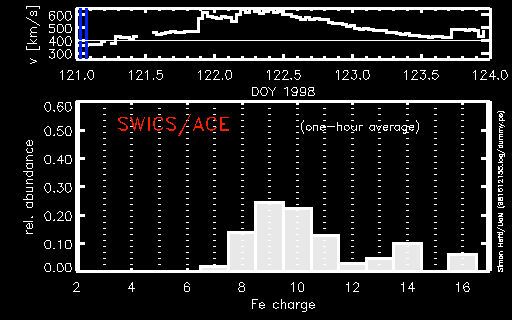
A coronal mass ejection (CME) happened on the Sun early last month. The material that was thrown out from this explosion passed the ACE spacecraft. The SWICS instrument on ACE has produced a new and very
...more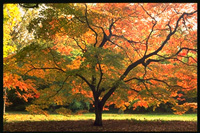
J.S. Maini of the Canadian Forest Service called forests the "heart and lungs of the world." This is because forests filter air and water pollution, absorb carbon dioxide, release oxygen, and maintain
...more


